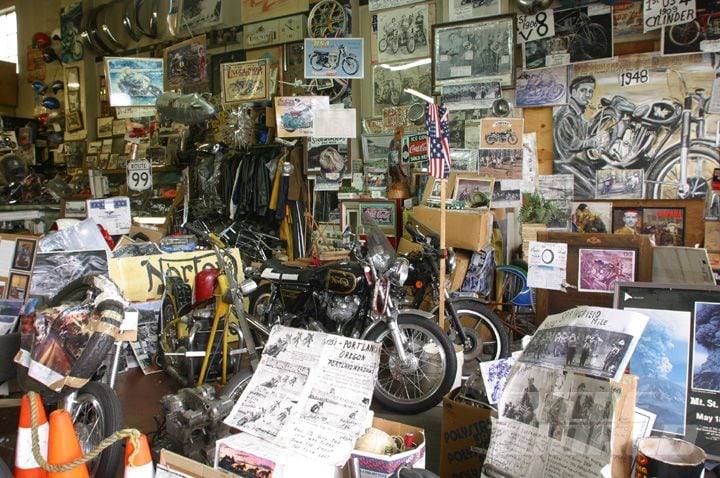Release Performance with Costs Motox Parts NZ Available Here
Release Performance with Costs Motox Parts NZ Available Here
Blog Article
Understanding Motorcycle Gears: How to Optimize Your Riding Experience
In the world of motorcycling, grasping the art of gear adjustment is essential for improving your riding performance. Properly understanding and utilizing motorbike gears can considerably impact control, gas, and acceleration effectiveness, transforming an ordinary experience into a seamless, electrifying trip. By integrating precise change timing and adjusting equipment choice to various road conditions, riders can ensure optimum engine efficiency and safety. The subtleties of clutch control, throttle sychronisation, and gear technicians beckon a deeper expedition, guaranteeing to open the full potential of your equipment. Exactly how can these strategies be used to really maximize your riding experience?
Comprehending Equipment Mechanics
At the core of bike characteristics, gear auto mechanics play an essential function in converting engine power right into activity, eventually dictating speed and control. The equipment proportions, very carefully developed, identify the relationship in between engine changes and wheel turns, affecting acceleration and gas effectiveness.
Comprehending gear technicians starts with acknowledging the significance of the transmission, which houses several gears of differing sizes. These gears connect with a process called meshing, where teeth of various gears involve to transfer power. The accuracy of this communication is critical; any type of misalignment or damages can result in ineffective power transfer, impeding performance. In addition, the arrangement and dimension of gears affect the motorbike's ability to manage different lots and speeds.
Furthermore, the principle of gear moving is indispensable to maximizing performance. Smooth and prompt shifts make certain that the engine operates within its ideal power band, protecting against unnecessary stress and boosting longevity (moto parts nz). By comprehending these mechanical ins and outs, cyclists can attain a harmonious blend of control, effectiveness, and power, boosting their riding experience
Timing Your Changes
Shift timing mastery is vital for maximizing bike efficiency and enhancing the riding experience. Properly timed shifts make sure that the engine runs within its ideal power band, which is critical for maintaining control, achieving smooth acceleration, and ensuring the durability of the motorbike. Cyclists have to create an instinctive feeling of when to change equipments, which entails recognizing the partnership in between engine changes per min (RPM) and rate.
To grasp change timing, pay close interest to the engine's sound and feel, as these provide vital clues regarding when to alter gears. The optimal shift point generally occurs when the engine comes close to the top variety of its power band without reaching the redline. Shifting prematurely can bring about a lack of power, while moving far too late might trigger unnecessary engine pressure
Furthermore, roadway conditions and riding style impact shift timing. In comparison, throughout highway riding, less changes at higher rates can be more proper.
Enhancing Gas Efficiency
While grasping bike gears is critical for performance, improving gas efficiency is similarly vital for both ecological and financial reasons. Optimal gas intake not only lowers operational costs however additionally minimizes the environmental impact of riding. To attain this, one must understand the complex partnership in between equipment selection and engine performance.
First of all, choosing the appropriate gear at ideal rates can significantly impact fuel usage. Riding in a greater equipment at reduced rates can bring about engine hauling, which is detrimental to both fuel economic climate and engine wellness. Alternatively, riding in reduced equipments at high rates causes unneeded gas consumption. Therefore, preserving an optimal balance by changing gears in positioning with roadway problems and anticipated maneuvers is vital.
Additionally, normal upkeep plays an essential duty in fuel effectiveness. Guaranteeing that the motorbike is well-tuned, with tidy air filters and properly pumped up tires, can enhance aerodynamics and minimize gas wastefulness. Furthermore, adopting a riding design that embraces steady velocity and smooth deceleration can add to far better gas economic climate.

Strategies for Smooth Transitions
Attaining smooth gear shifts is basic to enhancing the riding experience and guaranteeing the long life of a motorcycle's transmission system. Appropriate gear changing not just contributes to a seamless trip however also minimizes damage on the mechanical components. To grasp the art of smooth transitions, riders should focus on a couple of essential strategies.

Second of all, clutch control plays an essential role. Involving and disengaging the clutch efficiently calls for technique. The clutch bar must be launched progressively, enabling a seamless transfer of power from the engine to the wheels without triggering a jolt or sudden activity.

Adjusting to Road Conditions
Navigating diverse roadway conditions is a crucial skill for any motorcyclist intending to keep control and security. Whether you're riding on damp surface areas, gravel roads, or browsing sharp turns, your capability to adjust your equipment usage and riding strategy is critical. Recognizing exactly how to adjust your gears properly can significantly impact traction and stability, guaranteeing a much safer journey.
On damp roads, it is advisable resource to maintain greater equipments to minimize torque and lessen wheel spin. This strategy assists keep hold on unsafe surfaces, allowing for smoother acceleration and slowdown. On the other hand, when riding on crushed rock or unequal surface, lower gears are more effective. Lower equipments provide much better control and enable you to respond more swiftly to unanticipated adjustments in the roadway surface.
Sharp contours demand precise gear monitoring to balance rate and control. Downshifting prior to entering a curve can aid preserve energy while guaranteeing the bike stays secure throughout the turn. Constant technique in varied problems boosts your ability to forecast and respond to changes in roadway appearance and incline.
Verdict
Mastering motorcycle gears considerably improves the riding experience by boosting control, acceleration, and gas performance. Adjusting equipment choice to numerous roadway problems, such as making use of higher gears on wet surfaces and lower gears on gravel, further enhances handling and safety.
Understanding gear mechanics starts with identifying the importance of the transmission, which houses numerous equipments helpful resources of differing dimensions. These equipments engage with a procedure understood as meshing, where teeth of different equipments involve to transmit power (motocross gear). Gentle adjustments to the throttle throughout gear shifts can prevent jerky activities and preserve a consistent riding his response rate
Whether you're riding on damp surfaces, crushed rock roads, or navigating sharp turns, your capacity to adapt your equipment usage and riding technique is extremely important. Adapting gear choice to various roadway conditions, such as making use of higher equipments on wet surfaces and reduced gears on crushed rock, further boosts handling and security.
Report this page